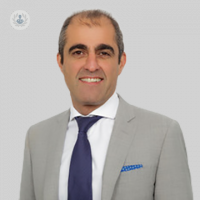Rhinoplasty recovery: What to expect
Written by:Considering the downtime required when undergoing cosmetic procedures such as rhinoplasty, also known as a nose job, it’s important to be well aware of what the recovery period entails and what types of results to expect before opting for surgery. In this informative guide to recovery from rhinoplasty, expert plastic surgeon Mr Navid Jallali sheds light on the healing process following surgery, including when the final results are visible and some possible risks and complications to be aware of.

How can I prepare for a rhinoplasty?
Generally, no specific preparation is required for a rhinoplasty. Patients who have symptoms of allergic rhinitis (hay fever) are advised to start steroid treatment prior to the operation. We advise patients not to take any non-steroidal anti-inflammatory drugs including Ibuprofen and Naproxen for ten days prior to surgery. Otherwise patients can eat and drink as normal leading up to their surgery.
How long is the healing process after rhinoplasty?
This largely depends on the type of rhinoplasty, i.e. closed vs. open rhinoplasty. Generally, revision rhinoplasties tend to recover slightly differently to primary operations. Closed rhinoplasties have the quickest recovery time as the skin is not lifted from the tip of the nose. In general, results become stable around three to six months following the procedure. For open rhinoplasty, the tip can remain swollen for up to one year and swelling as long as eighteen months is not unusual.
Revision rhinoplasties also tend to have a longer recovery period, particularly if patients require cartilage grafting. The outcome is also more variable with revision rhinoplasty as these operations are often complex and hence the healing process tends to be longer and there may additional scars on other parts of the body, such as the rib cage area.
Does rhinoplasty come with any risks?
As with any operation under general anaesthetic, there are risks associated with this procedure. Risks, however, tend to be very low in experienced surgeons hands. Risks from the procedure include infection, bleeding, swelling, bruising, numbness and blocked nose. Far less common but more serious complications include CSF (brain fluid) leak which can occur with a septoplasty.
Patients should be aware that rhinoplasty in general has the highest revision rate compared to other types of cosmetic procedures. However, revision rates can be as low as five percent in experienced hands.
Can rhinoplasty change the appearance of other parts of my face?
Rhinoplasty is very successful in terms of harmonising a patient’s facial features. One of the key benefits of rhinoplasty is that it often leads to the eyes standing out much better than prior to the procedure. This is as a result of loss of projection of the nose which often helps to make the eyes stand out. The idea of a rhinoplasty is to improve the facial appearance and, as the nose is central to the face, it is very successful in achieving this.
Can patients breathe normally after undergoing a rhinoplasty procedure?
Immediately following the surgery, my patients have a pack in-situ which can remain in place for up to twenty-four hours. Once the pack is removed, patients can generally breathe relatively easily through the nose.
Occasionally, due to bleeding, the nostrils may become blocked but these blood clots tend to dislodge around two to six weeks following the initial procedure. Following that, the mucosa (lining of the nose) can remain swollen for up to twelve months following surgery. After that period, the mucosa, irritation and swelling tends to settle and most patients do return to normal breathing.
An external rhinoplasty is sometimes carried out in conjunction with a septoplasty. This is a procedure to realign the septum of the nose in order to improve the breathing. It’s generally successful, however, up to thirty per cent of patients may experience some long term breathing issues that may be related to problems further to the back of the nose. In general, however septorhinoplasties are successful in improving patient’s breathing.
If you are considering a rhinoplasty and wish to discuss the available surgical options, you can schedule a consultation with Mr Jallali by visiting his Top Doctors profile.


